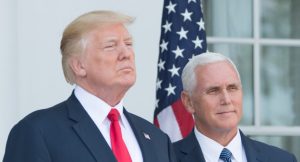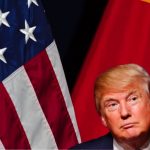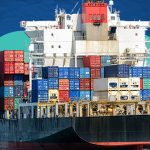What VP Pence’s Speech Says About China Trade Deal & China’s Response to Latest Tariff Announcement
 With President Trump’s announcement last week that he’s raising tariffs again on Chinese goods, we’re seeking insight into trade negotiations between the countries. Is there anything coming out of the Trump Administration to give us hints on how trade negotiations are going with China? Is a trade deal close? Far away? Will the trade war with China keep escalating and escalating? Or is there an actual end in sight?
While the answers to these questions elude, there may be some real clues in a speech Vice President Mike Pence gave. He spoke at the Detroit Economic Club just days before the president announced an additional 5% increase on tariffs across approximately $550 billion worth of Chinese goods to go into effect on October 1st (perhaps not coincidentally, the 70th anniversary of deceased Chinese Communist Party leader Mao Zedong establishing the People’s Republic of China).
In the last blog, we promised to break down what we can take away about the trade war with China from the VP’s speech at the Detroit Economic Club. Now it’s time to deliver.
Below are 3 takeaways about the trade deal negotiation with China from Vice President Pence’s speech. After that, there’s a quick update on China’s response to Trump’s latest tariff announcement.
With President Trump’s announcement last week that he’s raising tariffs again on Chinese goods, we’re seeking insight into trade negotiations between the countries. Is there anything coming out of the Trump Administration to give us hints on how trade negotiations are going with China? Is a trade deal close? Far away? Will the trade war with China keep escalating and escalating? Or is there an actual end in sight?
While the answers to these questions elude, there may be some real clues in a speech Vice President Mike Pence gave. He spoke at the Detroit Economic Club just days before the president announced an additional 5% increase on tariffs across approximately $550 billion worth of Chinese goods to go into effect on October 1st (perhaps not coincidentally, the 70th anniversary of deceased Chinese Communist Party leader Mao Zedong establishing the People’s Republic of China).
In the last blog, we promised to break down what we can take away about the trade war with China from the VP’s speech at the Detroit Economic Club. Now it’s time to deliver.
Below are 3 takeaways about the trade deal negotiation with China from Vice President Pence’s speech. After that, there’s a quick update on China’s response to Trump’s latest tariff announcement.
1. USMCA Talk May Mean Trade Deal Is Not Close
One success the Trump Administration has had is negotiating the United States-Mexico-Canada Agreement (USMCA) to replace the North American Free Trade Agreement (NAFTA), but there’s an asterisk on that success: The deal has to be ratified in order to actually go into effect. With that denouement to the USMCA drama in mind, the president and vice president are urging Congress to pass the deal. Of course, they’re up against some Democrats, who would love to take this victory away from Trump, working to block the deal’s passage. That means USMCA held a prominent place in the VP’s speech, and it is relevant to the China Trade War discussion. After, as expected, talking about the economic benefits of the USMCA and how it’s superior to NAFTA, the vice president went on to say, “… make no doubt about it, by passing the USMCA, we’ll strengthen the president’s hand in negotiations with China.” This makes me think despite things like Trump saying “China wants a trade deal badly” and “China called last night” to resume trade negotiations, as reported by the BBC (on August 27th, 2019), that the administration doesn’t think we’re that close to a trade deal with China. This is evidence on top of evidence, really. Not only is the president continuing to increase tariffs, but he’s also looking for other tools to increase U.S. leverage on China (labeling China as a currency manipulator is a smaller tool President Trump has recently added to his leverage). Looking at the USMCA as potential leverage may be the closest thing to an admittance by the administration that it’ll take more than tariffs to get China to come to a trade deal that meets U.S. demands. Perhaps this is nothing more than the vice president saying the USMCA provides the U.S. with more leverage against against China. The deal certainly should help strengthen U.S. trade in North America, in turn, helping lessen the impact of decreased trade with China. However, even if Vice President Pence speaking about the USMCA was strictly to raise public support for the deal and further urge Congress to pass it, bringing it up as something to “strengthen the president’s hand in negotiations with China” when most don’t predict ratification —if the deal is indeed ratified — happening before year’s end does not bode well for a Sino-American trade deal being reached soon. I would also add it makes it appear that the Trump administration itself does not believe a trade deal will be reached soon.2. Politics Outside of Economic Factors Play Large Role in Trade Negotiations
Despite emphasis on the financial/economic implications of our trade situation with China, the vice president brought up several political issues the United States has with China. You can see this page to check out these excerpts from Pence’s speech:17 years ago, America agreed to give Beijing open access to our economy. We brought China into the World Trade Organization. Previous administrations—of one party and another—made the choice in the hope that freedom in China would expand in all of its forms if we opened our markets to them. And I’m not talking about just economically but also politically, with a new found respect for classical liberal principles, the rule of law, private property, personal liberty, and religious freedom. We hoped to see an expansion of the entire family of human rights in China.
But over the last 17 years, we haven’t seen it. In fact, the Chinese communist party has used an arsenal of policies inconsistent with free and fair trade. Policies like tariffs and quotas, currency manipulation, forced technology transfer, intellectual property theft, and industrial subsidies, all the while not becoming a freer society, but actually in so many ways, moving China in the opposite direction.
… for the United States to make a deal with China, Beijing needs to honor its commitments, beginning with the commitment China made in 1984 to respect the integrity of Hong Kong’s laws through the Sino-British joint declaration. As the president said yesterday, it’ll be much harder for us to make a deal if something violent happens in Hong Kong. And I want to assure you our administration will continue to urge Beijing to act in a humanitarian manner. And urge China and the demonstrators in Hong Kong to resolve their differences peaceably.Yes, the unrest happening right now in Hong Kong as civic rights demonstrators protest the Chinese government and China moves troops over the border, where it has stockpiled soldiers and tanks, is playing a role in these negotiations. There are those who fear a repeat of the Tiananmen Square Massacre, when China shocked the world by sending in its military and killing hundreds of student protesters, who criticized government corruption and called for democratic reform. A quick list of other political issues, beyond trade practices, Vice President Pence brought up are mainly human rights in nature:
- Rule of Law
- Private Property
- Personal Freedom
- Religious Persecution
3. Trump’s Primary Goal Not Deal With China
Does President Trump want a trade deal with China? Absolutely. I do believe, however, there’s another outcome with which he’d be just as, if not more, happy. That outcome is manufacturing moving away from China back to the U.S. Over and over again, Vice President Pence brought up American jobs in his speech. Right at the top, he specifically talked of Trump’s primary focus on American manufacturing, saying, “Though one administration after another allowed unfair trade deals to hollow out American manufacturing all across the heartland of this country, this president pledged to put American jobs and American workers first, and that’s exactly what we’ve done….” As Pence began his motif of American jobs, workers, and manufacturing with the above quote, he pointed to a list of items to support how the administration kept Trump’s pledge. His list included withdrawing the U.S. from the Transpacific Partnership, putting China on notice “that the era of economic surrender is over”, opening up European markets to more American agricultural products, negotiating a new trade deal with South Korea, and negotiating the USMCA. But I think one of the most telling things in the vice president’s list was when he said the following: “… we appointed the toughest and smartest trade negotiators in the history of this country to fight on behalf of American workers.” The trade negotiations aren’t as much about beating China as they are about increasing U.S. manufacturing and jobs, which is foundational in economic growth. Though he’d be happier with a deal that includes a large increase of U.S. manufactured goods being exported to China, I think President Trump would be perfectly happy to levy enormous tariffs on China and never reach a deal if it meant U.S. moved a majority of its Chinese sourcing to domestic manufacturing. Of course, that would mean sourcing couldn’t just switch to importing from other countries, something we’ve already seen starting to happen in 2019. President Trump obviously realizes his goals of increased U.S. manufacturing require more than just a change in the trade situation with China. China just gets the most attention because its our biggest trade partner with the biggest trade deficit and the most obvious unfair trade practices. President Trump is taking aim at all the countries the U.S. has a trade deficit with. He said at the recent G7 summit that all the countries with which the U.S. has trade deficits “have no choice” but to make trade with U.S. fair or the U.S. won’t continue to deal with those countries:Our farmers have been hurt. Our workers have been hurt. Our companies have moved out and moved to Mexico and other countries, including Canada. Now we are going to fix that situation. And if it’s not fixed, we’re not going to deal with these countries…. So we’re negotiating very hard tariffs and barriers. As an example, the European Union is brutal to the United States…. The gig is up…. They can’t believe they got away with it. Canada can’t believe they got away with it. Mexico! We have a hundred billion dollar trade deficit with Mexico… … a lot of these countries actually smile at me when I’m talking. And the smile is we couldn’t believe we got away with it…. It’s going to change. They have no choice. If it’s not going to change, we’re not going to deal with them.This whole shifting of manufacturing back to the U.S. is a big part of why the USMCA is such an important deal for the Trump administration. Vice President Pence’s speech spent time on the USMCA’s potential to increase U.S. manufacturing:
… the USMCA levels the playing field for American workers and puts American jobs first. Under the USMCA, 75% of auto parts in duty free cars must be made right here in North America and 40% of them must be made by workers making what is essentially the hourly average wage here in the United States. We believe that will eliminate the historic incentive to manufacture outside the United States. It’ll eliminate the incentive to move jobs south of the border. The USMCA is a huge improvement on NAFTA. In fact, according to the International Trade Commission, the USMCA will add more than $68 billion to our economy and create another 176,000 American jobs.Thus, President Trump wants to negotiate deals with countries around the world that will increase U.S. manufacturing, as he believes the USMCA will, but ultimately appears to have no problem hindering trade with countries with which such deals can’t be reached. The primary goal is not trade deals — not even in trade negotiations with China. The primary goal is growing U.S. manufacturing and American jobs along with it.
Quick Update on Aftermath of Trump’s Latest Tariff Increase Announcement
Yun Li reported in a CNBC article that Trump said the U.S. and China are to resume talks today (Thursday, August 29th). President Trump’s tariff announcement also seems to have been an effective response to China’s tariff announcement that preceded it, judging by China’s response that Li reported:China softened its stance Thursday saying it’s willing to resolve the trade war with a “calm attitude” and indicating it won’t retaliate against Trump’s new tariff threat immediately. China also said the Chinese and U.S. trade delegations have maintained “effective” communication. “China has plenty of means for countermeasures, but under the current situation, the question that should be discussed right now is about removing the U.S.′ new tariffs on $550 billion in Chinese goods to prevent escalation of the trade war,” Gao Feng, spokesman for China’s Ministry of Commerce, said Thursday.

Comments




that very interesting